
I didn’t really know what to expect from Bolivia. We came into the country in a bit of a hurry, left by the boat across Lake Titicaca in what was essentially a field. I’ve no idea whether or not it was an official landing point. But it got us to the boarder and out of Peru with minimal disruption at a time when many fellow travellers were still stuck. With all that, the boarder crossing itself was the easiest we’ve had so far. And so it was we found ourselves in Copacabana (not THAT Copacabana) a day before or 2 earlier than we’d expected.
We’d always planned to visit Isla del Sol. The Incas claimed this was the place where the sun was formed, and where their founding fathers were brought into being, though it was an important religious centre long before they arrived. I never really thought about how it might look though, and therefore was entirely surprised by the serenity and beauty of the island. It felt like what a Mediterranean island may have looked like before tourism took over. The island has no motorised transport at all- people walk and use mules. So the pace of life was perfect for unwinding after what was a reasonably stressful few days.



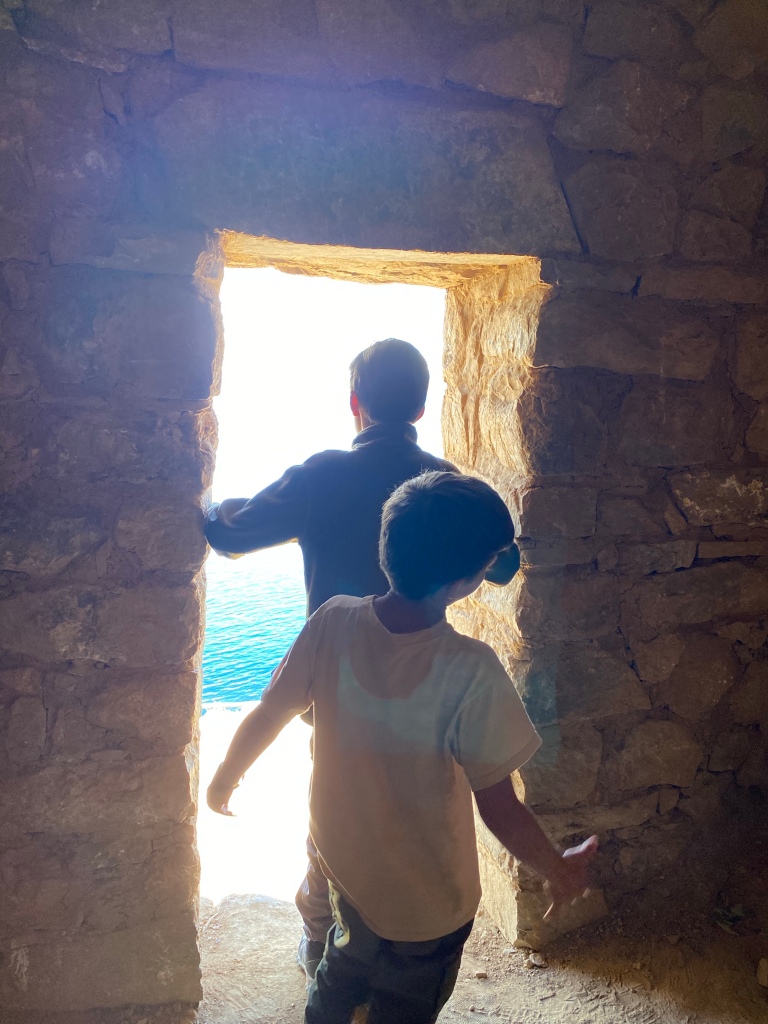

We arrived by boat to the north of the island, and hiked the length of the island to our accommodation at the south. The altitude made the hills hard work, but it was worth it for the views. Although if you looked towards the Peruvian shores you could see thick black towers of smoke from the tyres burning at the protest sites, all the way to Puno, over 150km away. That aside, the views were utterly breathtaking.
That evening, having checked into our hostel for 2 nights, we realised we’d not brought enough cash with us for the 2 days, and there were no cash points on the island. Only 2 restaurants were reported to take cards, and 1 of those was closed due to a graduation party which seemed to involve 95% of the town. We went to the other restaurant, down a dark path through a wooded area, to find it in darkness. We got to the point of accepting that we were going to be eating the few crackers and nuts we’d brought with us when the owner came out to greet us. As it turned out they had no mains power in their restaurant, which was solely candle-lit when guests arrived! They cooked over bottled gas burners, and in a wood-fired pizza oven. They could only handle card payments via an app which only accepted Bolivian cards, but they were insistent that we could eat with them and then pay the money into their bank account when we were back on the mainland. With no real alternative options, we gratefully accepted their incredibly kind offer.
And WHAT a meal we were served!! Timmy had the most delicious lasagne (his favourite). And the rest of us had the most beautiful trout, fresh from the lake, oven-poached in white wine with foraged herbs from the island, and served with quinoa and vegetables fresh from their garden. It was honestly one of the best meals I’ve eaten in my life. Oh… and the garlic rolls, baked in the pizza oven…!
The next morning our poor hungover young host helped us to get cash-back from the restaurant who could handle UK cards, which allowed us to stay the second day on the island. We spend it pottering around some of the Inca sites and enjoying the sunshine.

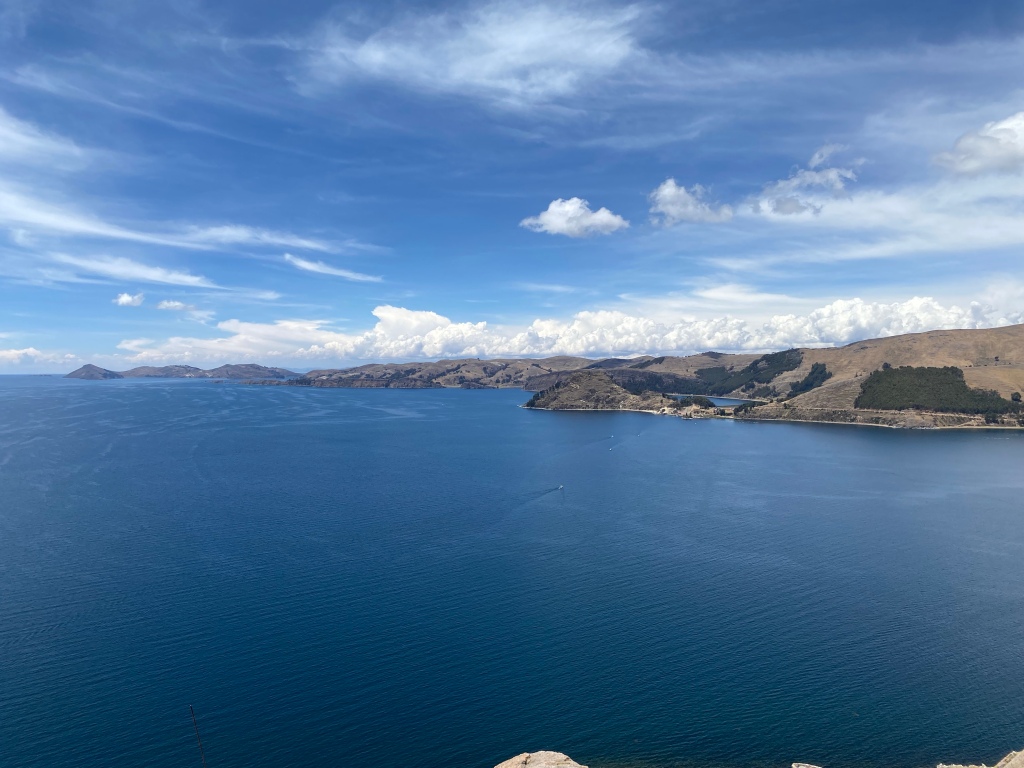
Back on the mainland, we had a day to potter around Copacabana, a small town on the shore of lake Titicaca. The town seems to exist mainly on backpacker tourism, and was busy with others who had managed to get out of Peru across the lake. It was nice to meet others who we’d met up with over the past week or so as we all made the same journey. Other than tourists, Copacabana is also a major pilgrimage centre, and home to the Virgen de Copacabana, Bolivia’s most revered religious image.
The next day we were on a bus to La Paz. Given that, at 1 point, Pete and I were worried we’d still be stuck in Peru for Christmas, and hurriedly trying to work through other options to celebrate, it was with a mixture of gratitude and relief that we made it to the apartment that we’d booked as a Christmas present to ourselves. We set-to making it cosy and Christmassy, whilst not buying decorations that we’d throw away.
Before we got into any serious Christmas prep we had 1 more trip to do – back towards Lake Titicaca, but on the road towards Peru, lies an archeological site named Tiwanaku- often known as the South American Stonehenge. Founded around 1500BC, there’s much debate over the purpose of the site- it seems most likely to have been a religious site with a vast number of ‘inns’ or ‘hotels’ to host pilgrims from across a vast empire. The area which is available to visit is big, and yet only represents 2% of the whole site, most of which is yet to be excavated. If you’re interested, ‘The Ancients’ did a great podcast about the site which meant that I visited with some knowledge of what I was looking at for once!!


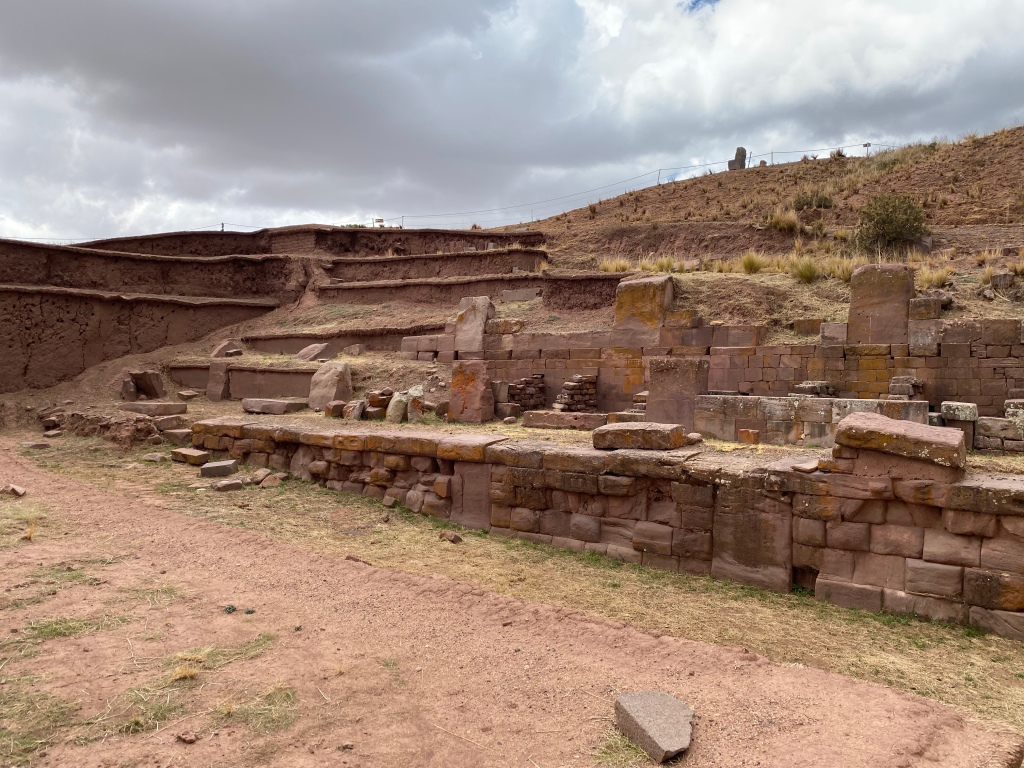
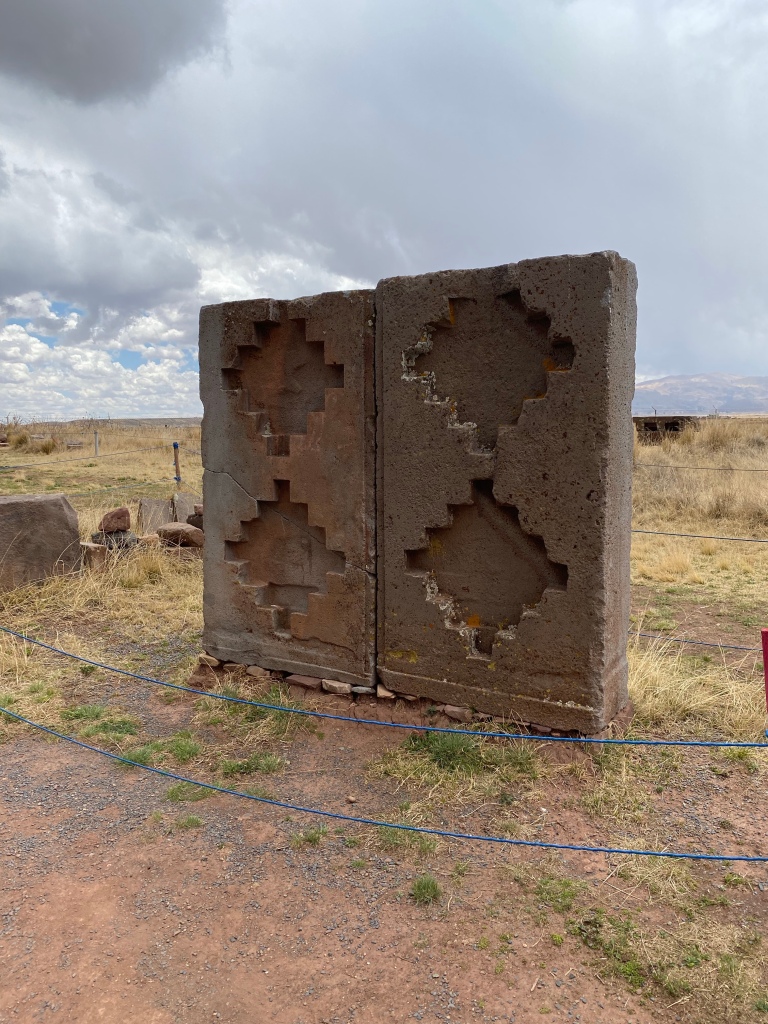


Over the next few days we got ready for Christmas. We sourced most of the ingredients for Christmas dinner from the local market- roast chicken (we’d never have eaten a whole turkey!!), nice sausages to make pigs in blankets, and all the vegetables. We managed to find herbs to make stuffing, and American brown gravy mix which makes a reasonable substitution for Bisto! There’s nothing like Christmas pudding available in Bolivia, and it was too late to make 1, so we substituted Christmas ice cream cake! We had a much-needed rest, watched movies, ate pizza, baked cookies, painted, drew, played board games, and the boys chatted with some of their friends back home. On Christmas Eve we took a cable car (La Paz’s awesome and cheap equivalent of the London Underground) to an English speaking church which was a real blessing. Then we came home for lasagne and Muppets Christmas Carol! On Christmas Day we called family, shared gifts and each had a new E-book to read.

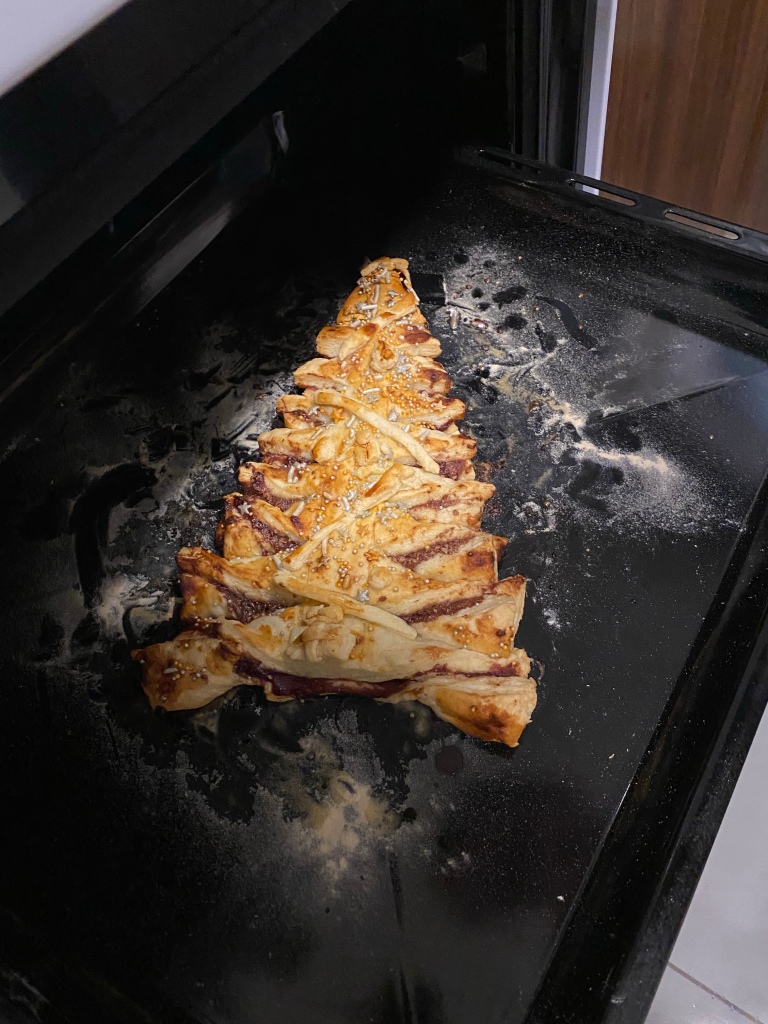


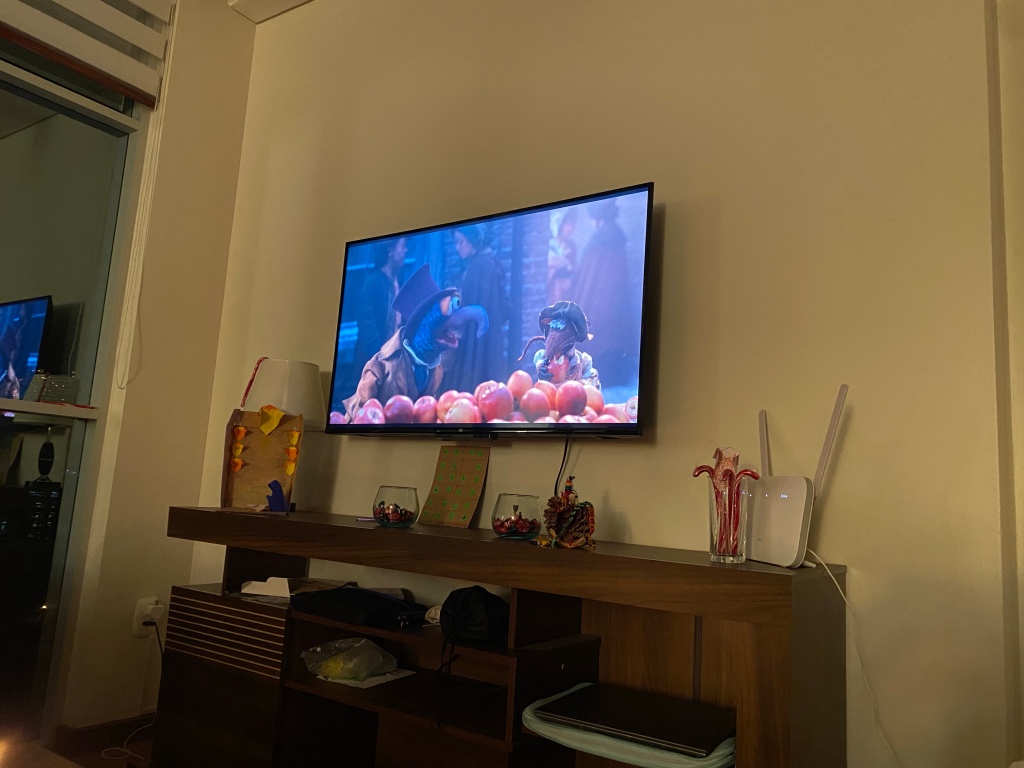

Overall Christmas was just a lovely relaxed time together. I even had chance to learn to play backgammon! We ended up extending our time in La Paz for a couple of days to give us chance to do some forward planning and booking for the weeks ahead.
Our last stop in Bolivia was Uyuni, so that we could visit the Salt Flats. We booked ourselves on a 3 day tour which also took in a national park which is home to thousands of flamingos. I have to say, other than the salt flats and the national park, we’d not really payed much attention to the itinerary of the tour. We knew we wanted to do the 3 day tour, and we knew all the tours were essentially identical, so we just booked the cheapest tour which looked vaguely professional (you hear stories of drunk drivers and poor vehicles so you don’t want to book the cheapest!) and then just turned up.
The first day we spent mostly on the salt flats. It’s hard to explain just how spectacular these really are. It looks like you’re standing in the middle of a vast snow or ice field… it looks like pictures of Antarctica, where the ice goes on seemingly for ever… only it’s not ice… it’s salt! Mile upon mile of salt. So, of course, nothing grows. So there’s no wildlife. So in some ways it’s eerily lifeless. And yet it has an otherworldly beauty all of its own.
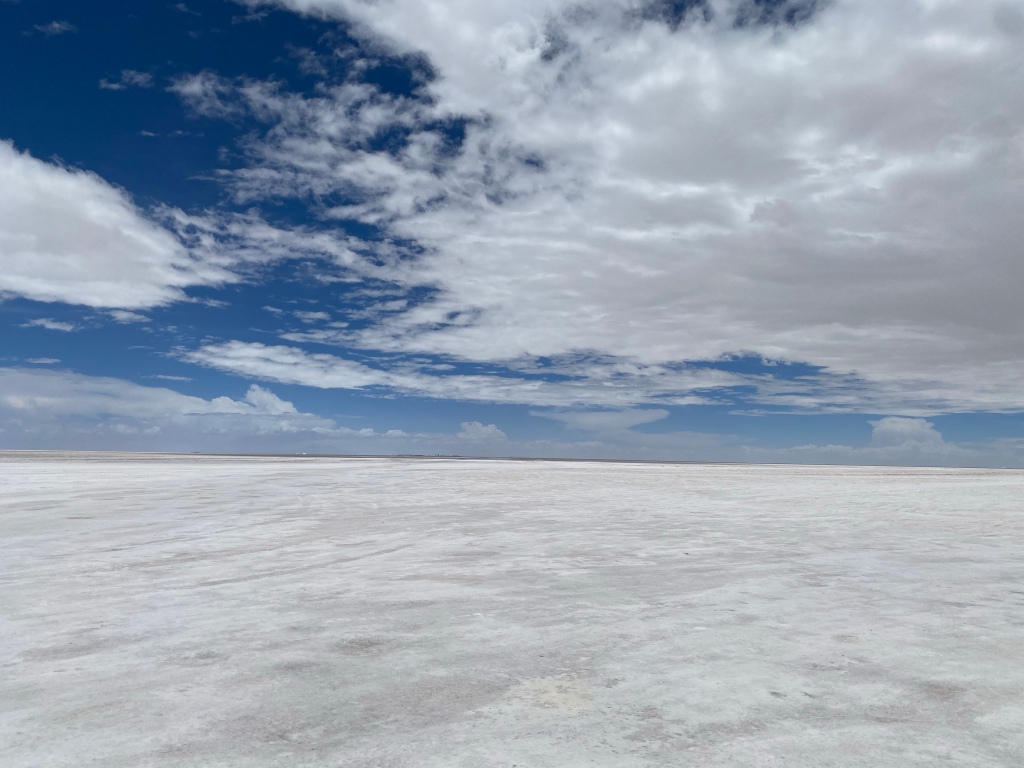

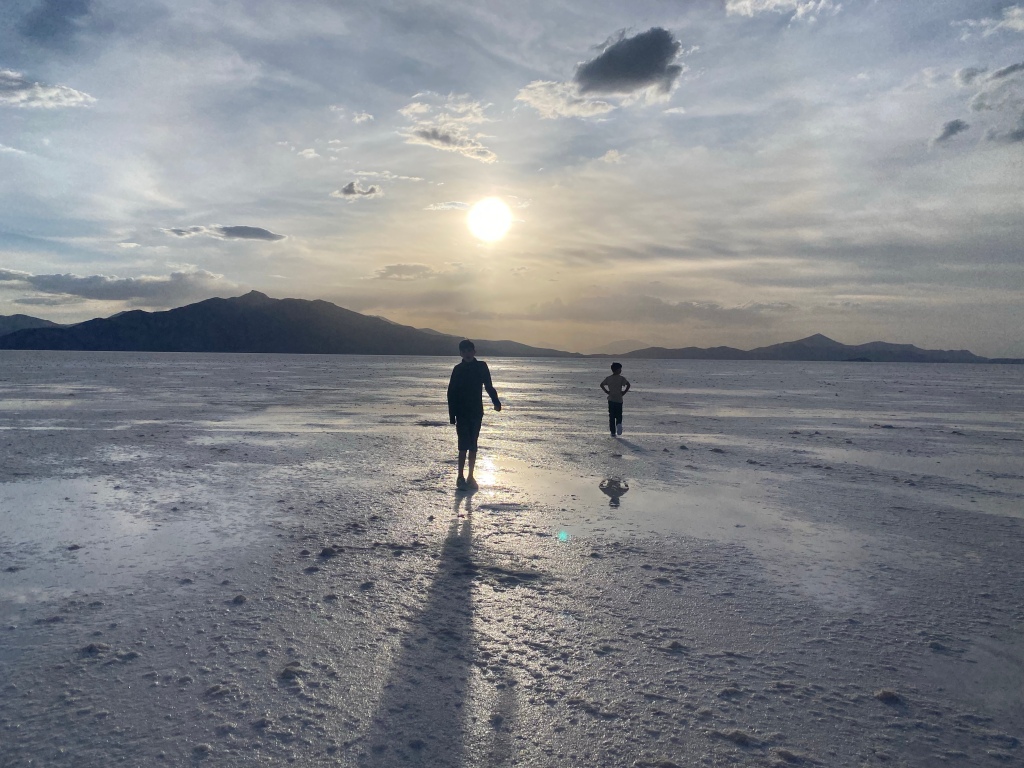

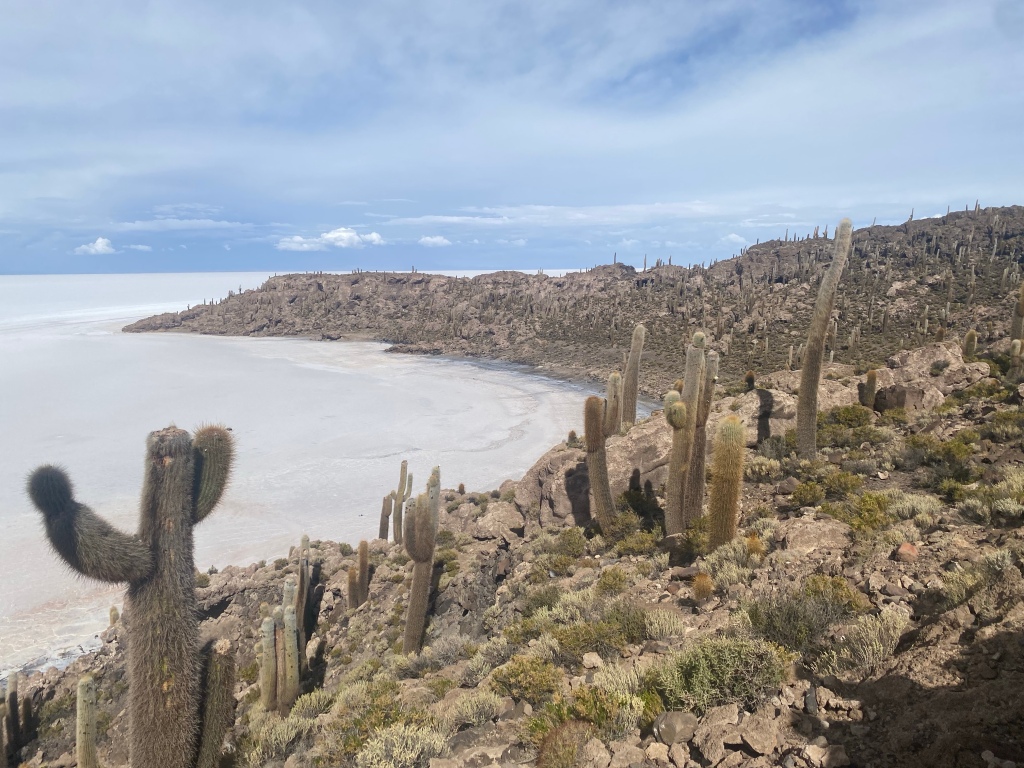

Then in the middle of this lifelessness there are islands brimming with life: cacti and shrubs and birds and insects which seem somehow more alive after the silence.
I forgot to mention the first stop of the day, and Timmy’s favourite, the ‘train graveyard’… a place where they park up old steam trains and carriages. For Timmy it was 1 big adventure playground!

The second day of the tour was dedicated to visiting a series of lakes with ever-increasing numbers of flamingos. The journey took us across Alto Plano, past active volcanos, and through some incredible rock formations. Timmy had plenty more opportunities for climbing and scrambling, as well as photography. Since all of the tours take the same route and use the same accommodation, we met lots of interesting people – not just the lovely Bolivia couple who were sharing our jeep, but others from Britain, the US, and all over Europe. That night in the hostel we had a lot of fun playing bilingual cards, Uno and Dobble.
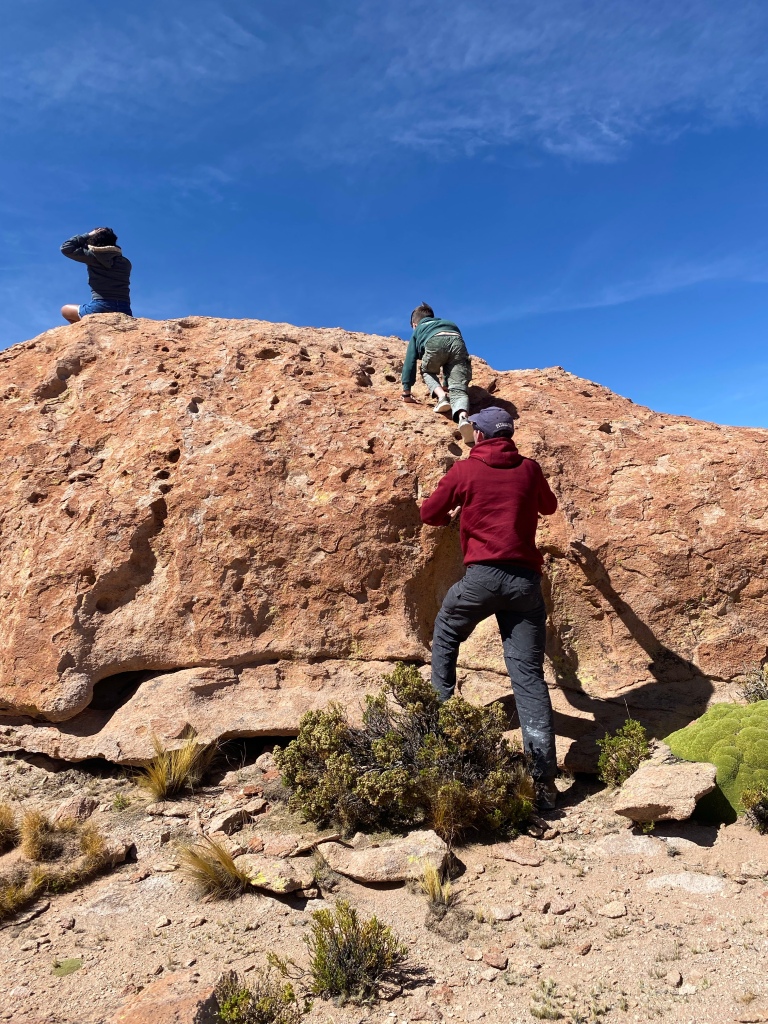





The 3rd day we were up early to catch the sunrise over the geysers. Well… we almost caught the sunrise. We were a little late because 1 of the other drivers went AWOL overnight, and our driver was trying to sort out the problem for the other group before we left. Apparently the driver never came back, and the company had to send another driver over the mountains to find the stranded group. We were definitely left counting our blessings, as or driver was very very good.



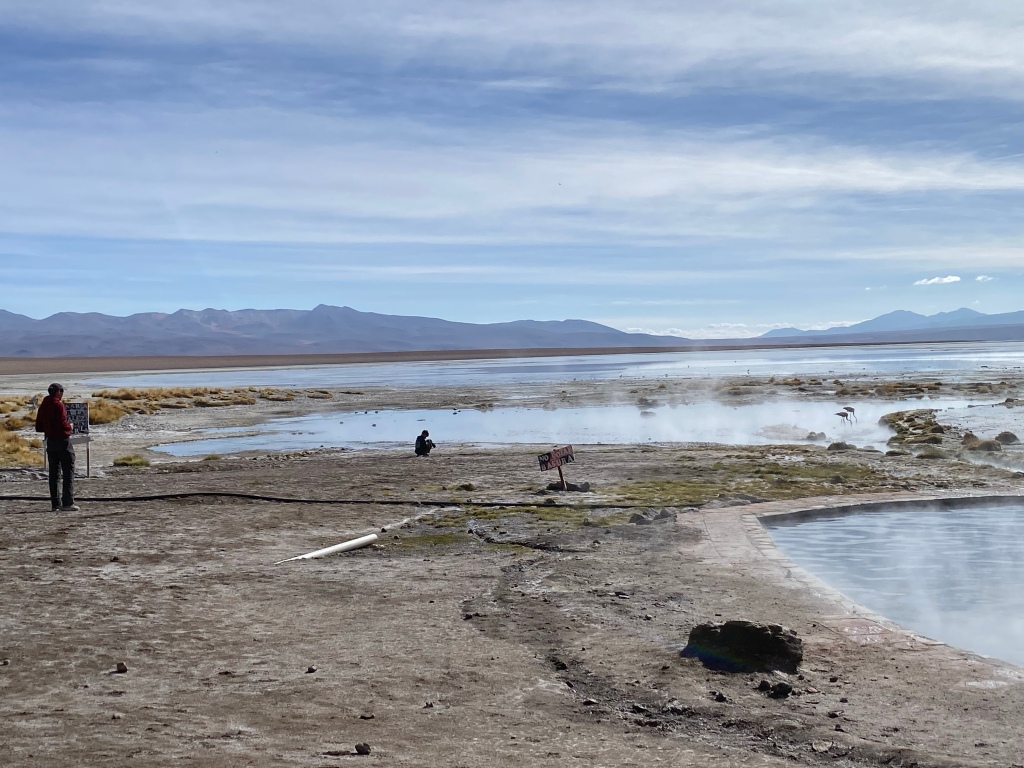
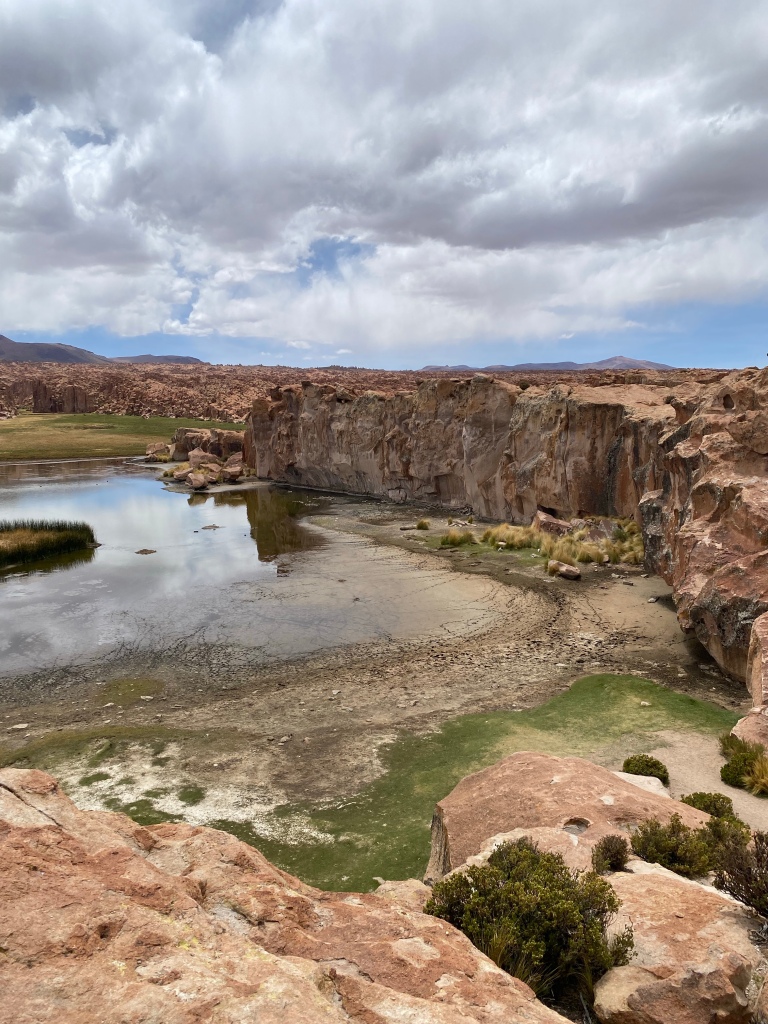

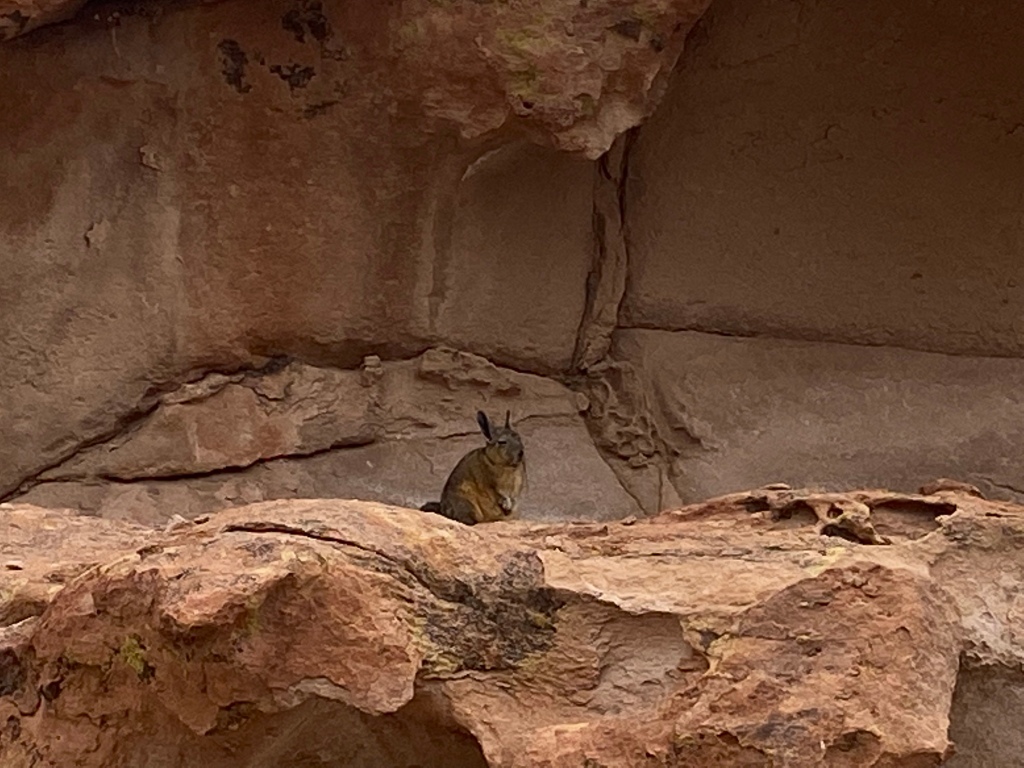
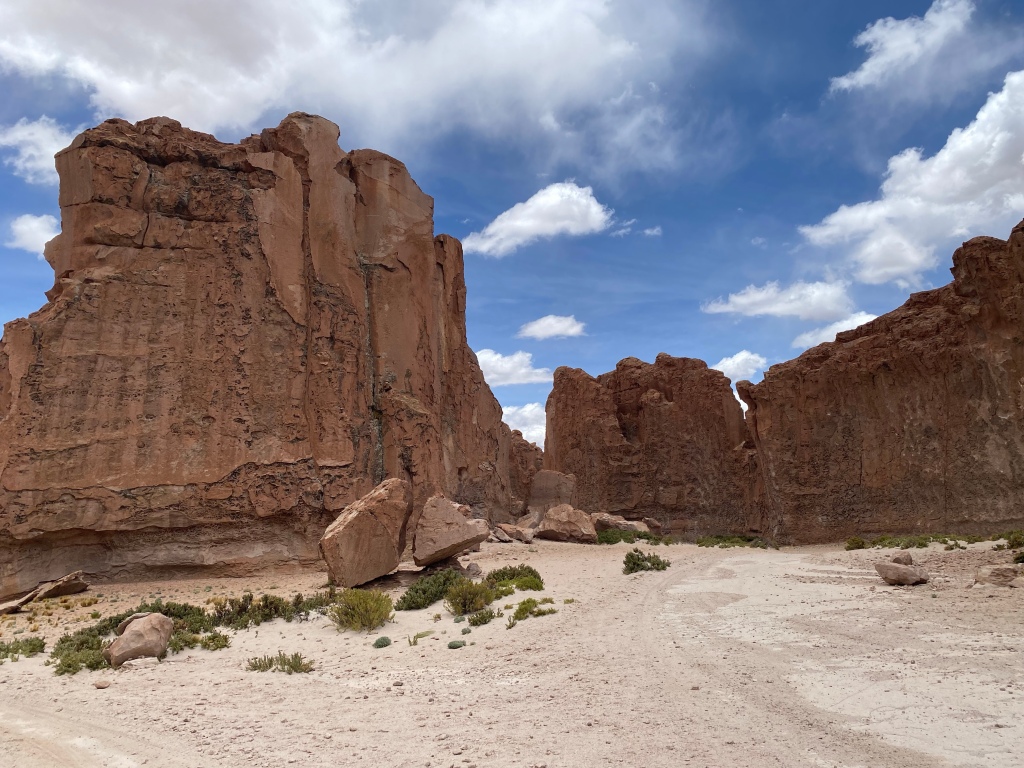
Close to the geysers we passed a geothermal power plant, apparently Chinese-funded, and well hidden in the midst of the national park. Geothermal is one of the cleanest and cheapest sources of energy, certainly in terms of ongoing costs. You do wonder if more investment In geothermal energy, particularly developed nations investing into developing nations within the Ring of Fire, might be a good step forwards for the climate as well as for those nations.
We visited our 3rd hot springs of the trip, which was very welcome because it was freezing that morning!! Sitting in the pool, we could watch flamingoes feeding in the pool next to us, which gave Timmy 1 last photography opportunity! Then it was the long drive back to Uyuni, via some more rocks to climb and a very beautiful hidden lake. Oh, and an impromptu stop for our driver to help another driver with a flat tyre, who seemed have brought no tools with him. Timmy took full advantage of the opportunity to photograph the Vicuñas, a type of wild Lamoid which has the look of a Lama-Giselle.
And so ended our visit to Bolivia, though with hindsight we would probably have spent more time there.
So pleased to hear from you Helen and to know that you are all safe and sound. Fabulous photos and reporting. Keep safe, a belated Happy New Year. May the Lord bless you and keep you all safe. Happy travelling. Love Sue xx
,
LikeLike
Always so exciting
LikeLike